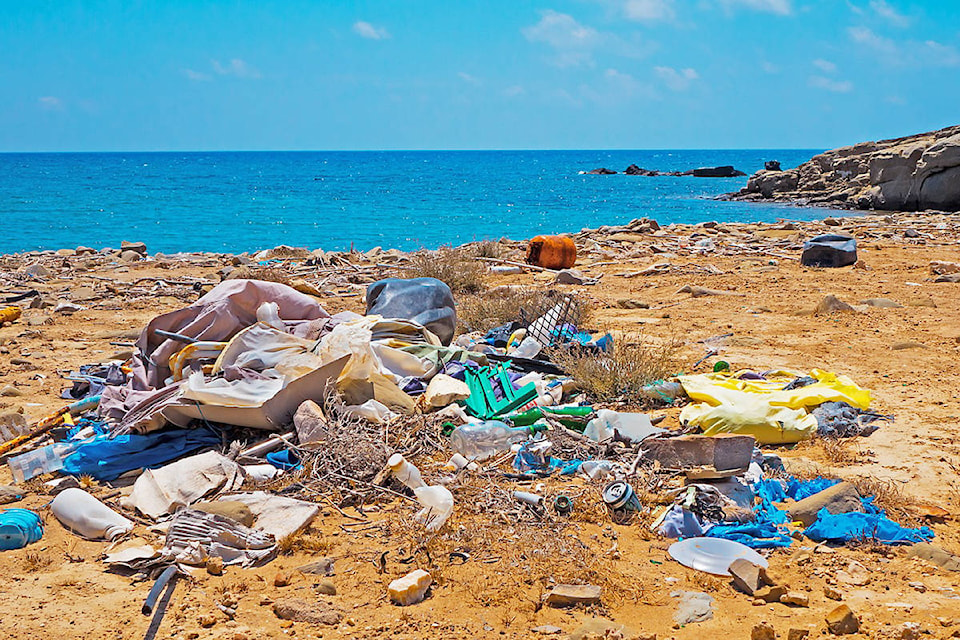Black Press Media published ‘Plastic bag ban a first step’ in the Points of View editorial of the Chilliwack Progress, Jan. 3, 2020. The purpose of the article is obvious – convincing its readers to embrace the Liberals’ efforts to ban most single-use plastics by the end of the year. To buttress their appeal, Black Press references “the Great Garbage Patches in the Pacific and the Atlantic Oceans made up mostly of our discarded plastic,” adding “that’s not even considering the problem of microplastics.” They declare “If a patch of floating plastic trash three times the size of France isn’t enough to convince people that waste plastic is a problem, what will?”
• READ MORE: EDITORIAL: Cleaning up our act
The Great Pacific Garbage Patch is not a contiguous mass of floating plastic trash. It is a widely dispersed area consisting primarily of suspended “fingernail-sized or smaller bits of plastic” – the microplastics that Black Press declared are not even considered. Being included in the “patch” requires only that four particles of plastic exist within a cubic metre of water. For context, it is akin to having a few flakes of glitter in your bath. Casual boaters cannot detect the patch as they pass through it.
The Great Pacific Patch is estimated to contain around 80,000 tonnes of plastic. That might sound like a lot, but since the mid-1950s the world has produced around 8.3 billion tonnes of plastic, so we are talking about .001 per cent of the plastic generated since the use of plastic became ubiquitous. Also, if one were to dispose of 80,000 tonnes of plastic waste at the Bailey Landfill in Chilliwack, at a cost of $88/tonne, it would only cost around $7 million. That’s approximately one-seventh what was spent building a new high school in Chilliwack.
Most of the plastic contained within the “patch” is not from North America. Eighty per cent of river plastic emissions entering our oceans come from 1,000 rivers, and one of which (the Delaware) is American. None are Canadian. The U.S. has the third largest population, yet it ranks 20th among coastal countries in terms of plastic waste contaminating our oceans. This is because only two per cent of waste in the U.S. is mismanaged, as compared to 76 per cent of waste in China, 83 per cent in Indonesia and the Philippines, and 88 per cent in Vietnam. China accounted for 27.7 per cent of the total mismanaged plastic waste in the world. The United States accounted for just 0.9 per cent. (Source: Science 13 Feb 2015: Vol. 347, Issue 6223, pp. 768-771.)
We got rid of paper bags because the demand for paper was destroying our forests. Plastic was a more ecologically friendly solution. A proper debate about how best to handle plastic in our society needs to occur, and the world ought to be engaged in a concerted effort to improve the waste management of the nations who are primarily responsible for the plastic waste getting into our oceans. However, we are not going to reach reasonable and rational solutions if we are perpetually inundated with misinformation.
Rob Bogunovic
